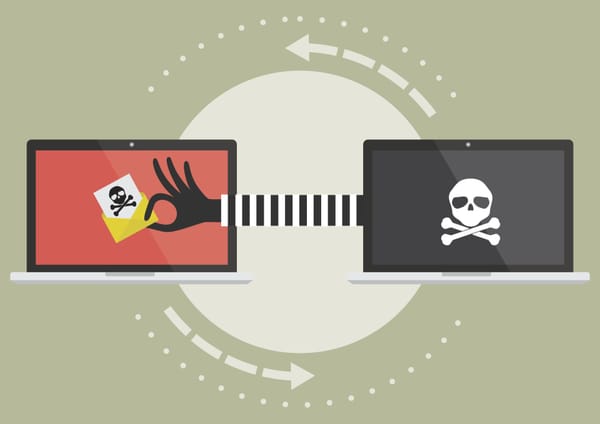Beware and Be Aware: 10 Facts that Expose the World of Scams

Scams, a timeless facet of human deception, have seamlessly woven their way into the fabric of our daily lives, evolving with each technological leap and societal shift.
Amidst this treacherous landscape, understanding the mechanisms and impact of these scams becomes not just a matter of curiosity but also a crucial line of defense.
This guide aims to venture beyond the mundane, diving into the core of deceit to uncover facts that educate and empower.
From the digital novice to the seasoned web navigator, prepare to explore the corners of scam artistry, ensuring that your next step into the digital domain is informed and secure.
1. Psychological Games
Scammers are adept at manipulating human psychology to ensnare their victims, employing various tactics that prey on emotions, trust, and cognitive biases. Understanding these psychological games is crucial in recognizing and defending against scams. Some of the most frequent strategies they use include:
- Authority impersonation: scammers pose as authority figures, leading victims to act without questioning the request’s legitimacy.
- Urgency and scarcity: creating a sense of urgency and scarcity triggers a fear of missing out (FOMO) in targets, short-circuiting rational thinking and pushing individuals to act hastily.
- Social proof and consensus: using fake reviews, testimonials and social media profiles, scammers give the illusion of trust, exploiting the psychological tendency to conform to peer behavior.
- Isolation tactics: isolating victims from friends or family who might offer a reality check prevents victims from seeking advice or verification from others.
- Emotional connection: exploiting human loneliness and the desire for companionship makes it difficult for victims to remain objective about requests for money or personal information.
2. Evolution of Scams
The evolution of scams mirrors the trajectory of technological and social progress, adapting to exploit new platforms, technologies, and human behaviors. This progression highlights the ingenuity of scammers and the perpetual arms race between fraudsters and those looking to thwart them. Here's an overview of how scams have evolved over time:
- Early days – face-to-face scams: from the shell game, where a ball is hidden under one of three cups and shuffled around to trick the observer, to various other street cons, face-to-face scams have constantly adapted to deceive victims.
- Mail fraud: the wide adoption of postal services led scammers to seize the opportunity to reach potential victims through mail fraud, including lottery scams, chain letters and Ponzi schemes.
- Telephone scams: after telephones became mainstream, scammers turned to cold calling to target victims, leading to the rise of telemarketing scams, including fraudulent charities, fake investment opportunities, and prize scams.
- Internet and email scams: The advent of the Internet and email shifted scam tactics significantly, offering con artists various new tools, such as phishing emails, fake online auctions, marketplace scams and malware.
- Social media and online dating scams: the integration of social media into our day-to-day lives has led to various scams, including catfishing, fake profile romance scams, and social engineering attacks.
- Cryptocurrency scams: the rise of cryptocurrency and blockchain technology has opened new avenues for scams, such as pump-and-dumps, fake investment opportunities, and ransomware attacks.
- COVID-19 Pandemic – A catalyst for evolution: the COVID-19 pandemic marked a significant point in the evolution of scams, with a surge in health-related scams, fraudulent unemployment claims, and phishing attacks exploiting fears and uncertainties related to the virus.
3. The Role of Technology
The role of technology, particularly artificial intelligence (AI) and deepfake technology, in the evolution and sophistication of scams cannot be overstated. These technologies have significantly expanded the arsenal of tools available to scammers, enabling them to create more convincing, personalized, and difficult-to-detect fraudulent schemes. Here’s how AI and deepfake technology are being utilized in scams:
- AI-led phishing and social engineering
- Voice impersonation
- Automated interaction
- Video and image fraud
- Identity theft and impersonation
- Manipulating public opinion and spreading misinformation
4. Phishing Attack Targets
Phishing attacks have become a pervasive threat in the digital realm, targeting not just individuals but also penetrating the defenses of organizations across various sectors.
A particularly alarming trend is the increased vulnerability of employees in smaller organizations. Here, the probability of encountering malicious emails is significantly higher, with statistics indicating that one in every 323 emails received by employees in organizations with 1–250 employees is malicious.
The mining industry emerges as one of the most vulnerable sectors, facing higher rates of malicious email attacks, with one in every 258 emails being malicious. This specific targeting can be attributed to several factors, such as high-value information, regulatory and environmental data, global operations, and financial transactions.
5. Economic Downturn and Fraud
The nexus between economic downturns and an uptick in fraud activities, including phishing scams and fraudulent job postings, underscores a crucial aspect of cybercriminal behavior: their opportunistic nature.
During periods of economic uncertainty, individuals and businesses are often more vulnerable, seeking financial relief or new opportunities, making them prime targets for fraudsters looking to exploit these circumstances for their gain.
6. Scams Targeting the Deceased
Some scammers specialize in "ghosting," where they use the identities of deceased persons to commit fraud, such as applying for loans, credit cards, and even tax refunds, exploiting the delay between death and the updating of records.
The scam relies on the bureaucratic lag that often occurs before death records are fully processed and cross-referenced with financial, governmental, and credit institutions.
By capitalizing on this window of opportunity, fraudsters can commit identity theft, leaving the bereaved families dealing with the aftermath of the fraud in addition to their loss.
7. Scam Baiting as a Counter-Scam Activity
Scam baiting is an intriguing countermeasure against scammers, where individuals, often called "scam baiters," engage with perpetrators to waste their time and resources, thereby preventing or discouraging them from targeting real victims.
This activity is about thwarting scammers and serves a more serious purpose of gathering information to expose and report fraudulent operations.
Scam baiters may lead scammers on, feigning interest in their schemes, asking them to perform ridiculous tasks, or pretending to go along with the scam while never intending to send money or personal information.
Some scam baiters take it further by attempting to access the attackers’ devices to find more information about their operations or to warn their potential victims. This form of internet vigilante justice can be risky and somewhat controversial, but it also proves that individuals are willing to fight back fiercely against online fraud.
8. Pet Scams
Pet scams have become a distressing form of fraud, especially prevalent online, where scammers post fake advertisements for pets that don't actually exist. These scams exploit people's emotional attachment and excitement towards adopting or buying a new pet.
The scam typically begins with an advertisement featuring a highly sought-after breed at a price that seems too good to be true. Once a potential buyer shows interest, the scammer creates a sense of urgency to rush the transaction, often citing reasons like moving houses or the pet needing a home urgently.
The buyer might be asked to pay upfront costs for the pet, including adoption fees, shipping, insurance, or even custom crates. After the initial payment is made, scammers may continue to invent additional costs, leading the victim down a rabbit hole of payments, with the promise of the pet being delivered soon.
Unfortunately, the pet never arrives, and the scammer eventually becomes unresponsive, leaving the victim out of pocket and without a pet.
9. Virtual Kidnapping
Virtual kidnapping scams involve fraudsters calling or messaging individuals, falsely claiming they have kidnapped a loved one, and demanding ransom for their release.
Threat actors instigate panic and fear, pressuring their targets to act quickly and pay up before they can verify the loved one's safety. These scams exploit emotional vulnerability, leveraging the instinctive desire to protect loved ones to extort money, often before the victim realizes it's a hoax.
10. The Sale of the Eiffel Tower… Twice
The story of Victor Lustig, who managed to "sell" the Eiffel Tower twice in the 1920s, is a testament to the audacity and creativity of scammers.
Posing as a government official, Lustig convinced scrap metal dealers that the tower was being sold for scrap due to maintenance costs. He created fake government documents and held secret meetings that lent credibility to his scheme.
After receiving a bid, he took the money and fled. Remarkably, he repeated the scam, exploiting the same narrative with different victims. This historical scam illustrates the power of persuasion and the vulnerability of even the savviest individuals when faced with a well-crafted deception.
Keeping Safe Against Scams
As you may know, scams come in many forms, making defending against them particularly challenging, especially for non-tech-savvy users. However, dedicated security software can give you better odds against scams, targeted attacks, and other forms of intrusion.
- Bitdefender Ultimate Security: protects your devices against viruses, Trojans, worms, zero-day exploits, ransomware, spyware, rootkits, and other digital threats.
- Bitdefender Digital Identity Protection: provides you with an overview of your online data, including traces from no-longer-used services, notifies you if your data has been compromised as part of a breach, and lets you patch weak spots in your digital footprint instantly.
- Scamio: a next-gen AI scam detection chatbot that helps you detect and prevent scams from harming you, combining state-of-the-art thread detection algorithms, pattern recognition, machine learning, and advanced data analysis techniques.
tags
Author

Vlad's love for technology and writing created rich soil for his interest in cybersecurity to sprout into a full-on passion. Before becoming a Security Analyst, he covered tech and security topics.
View all postsRight now Top posts
How to Protect Your WhatsApp from Hackers and Scammers – 8 Key Settings and Best Practices
April 03, 2025
Outpacing Cyberthreats: Bitdefender Together with Scuderia Ferrari HP in 2025
March 12, 2025
Streamjacking Scams On YouTube Leverage CS2 Pro Player Championships to Defraud Gamers
February 20, 2025
How to Identify and Protect Yourself from Gaming Laptop Scams
February 11, 2025
FOLLOW US ON SOCIAL MEDIA
You might also like
Bookmarks








